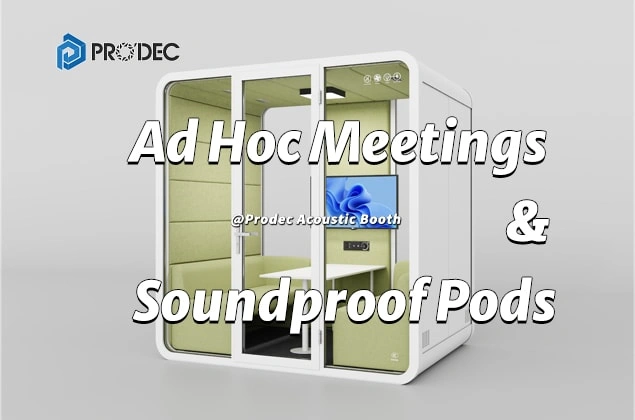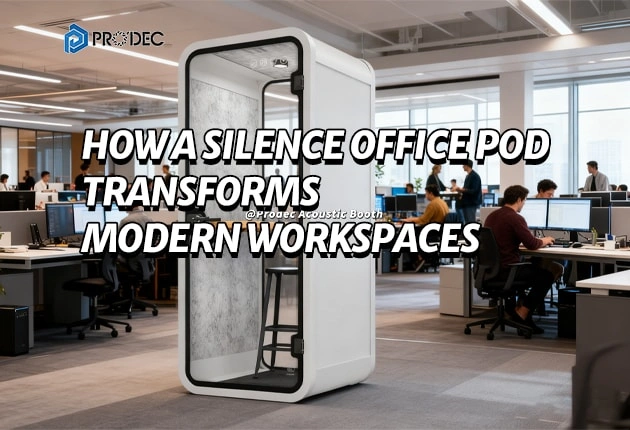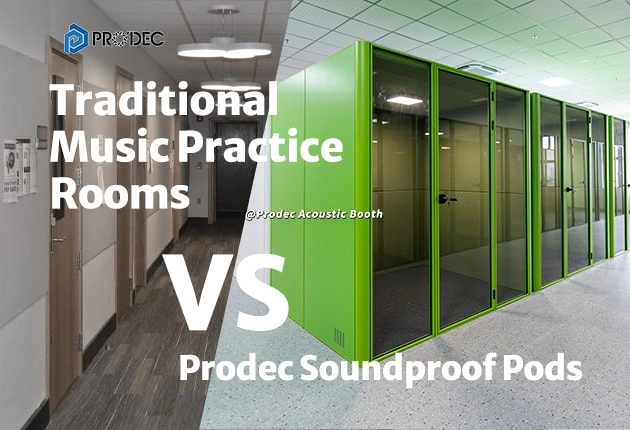
🎼 Soundproof Pods in Music Education: A Rising Trend
Around the world, music education spaces are shifting. Traditional, built-in practice rooms—once the default choice—are now challenged by highly flexible, modular soundproof pods. For music schools, conservatories, and training centers, these pods provide a consistent, cost-effective, and scalable alternative to conventional construction.
This article compares both solutions from the perspectives that matter most to educational institutions:
construction cost
acoustic performance
flexibility & space efficiency
student experience
long-term investment value
💰 1. Construction Cost: Fixed Rooms vs Modular Pods
Traditional Music Practice Rooms
Building fixed music rooms comes with unavoidable expenses:
Architectural design
Construction labor
Acoustic wall treatment
HVAC adjustments
Electrical system installation
Long construction lead times
Zero mobility once built
A single 8–12 m² practice room can cost USD 8,000–25,000 depending on region and acoustic requirements.
Modular Soundproof Pods
Modular pods provide a clear, predictable cost structure:
Unit price based on pod size
No construction approval required
Prebuilt acoustic structure
Integrated power, lighting, and ventilation
Installed within 4 hours
A 4-person music practice pod typically ranges USD 2,500–4,000, with full acoustic treatment included.
| Comparison Item | Traditional Practice Rooms | Soundproof Pods |
|---|---|---|
| Cost Structure | High & variable | Fixed price |
| Build Time | 30–90 days | 4 hours per pod |
| Construction Complexity | High | Minimal |
| Mobility | None | Fully movable |
| Approvals Needed | Often required | None |
✔ Conclusion: For institutions with limited budget or fast deployment needs, pods offer clear financial advantages.
🔇 2. Acoustic Performance & Noise Control
Traditional Practice Rooms
Acoustic performance varies significantly depending on:
contractor skill
wall thickness
material selection
whether the room is decoupled
construction precision
A poorly built room may suffer from:
leakage through gaps
unwanted resonance
weak bass absorption
inconsistent sound field
Modular Soundproof Pods
High-quality pods such as acoustic booths adopt multilayer composite walls, internal damping structures, and tightly sealed door systems.
Typical features include:
high-density insulation material
multi-layer laminated or insulated glass
internal acoustic panels to reduce reverberation
sealed structural joints to prevent sound leakage
Average noise reduction: 35–40 dB, suitable for:
piano practice
violin lessons
vocal training
acoustic guitar
recording & monitoring
✔ Pods provide consistent, factory-tested acoustic performance—with no dependence on on-site construction quality.
🏫 3. Flexibility & Space Utilization
Traditional practice rooms require structural alteration, which is often restricted in:
school buildings
university libraries
training centers
rented campuses
shared learning facilities
In contrast, soundproof pods can be placed almost anywhere:
classroom corridors
music building atriums
libraries
teacher offices
rehearsal spaces
dormitory study areas
Pods can also be reconfigured or expanded. Need a new practice area next semester? Move the pod. Need more rooms? Add more pods.
✔ Flexibility is the #1 reason schools are adopting modular acoustic solutions.
🌬️ 4. User Experience & Safety
A modern pod enhances not just acoustics, but also comfort:
Standard features include:
desk & seating (optional for instrument-focused pods)
power outlets
LED lighting
mobile holder
fresh air inlet & silent exhaust fan
durable anti-vibration floor structure
Prodec pods also include:
interior emergency release
external power-cut unlocking system
Ensuring full safety for students.
✔ Compared to traditional rooms, pods offer a more controlled, well-ventilated, and acoustically balanced environment.
🎻 5. Application Scenarios in Music Education
Here are the most common use cases seen across universities and music training institutions:
✅ Piano & String Instrument Practice
A controlled acoustic environment prevents echo and helps students focus.
✅ Vocal Booth for Voice Training
Pods double as professional vocal booth spaces for singing, spoken voice, and warm-up sessions.
✅ Recording & Portfolio Production
Music majors often need clean audio for:
assignments
auditions
recording exams
college applications
Modular pods function as small-scale recording booths.
✅ Online Exams & Interviews
More schools now require video submissions or online testing. Pods provide a distraction-free space.
✅ Teacher Recording & Online Lessons
Faculty benefit from a private acoustic zone for preparing lessons or giving remote tutorials.
✅ Multi-Pod Ensemble Rooms
Multiple pods can be arranged in clusters for different student levels.
✔ Many leading universities—including Renmin University of China and Nanyang Technological University—already deploy Prodec acoustic pods on campus.
📈 6. Long-Term Investment Value
| Factor | Traditional Rooms | Soundproof Pods |
|---|---|---|
| Reusability | None | 100% movable |
| Depreciation | Building depreciation | Modular asset value |
| Maintenance | High | Low, modular replacements |
| Campus Relocation | Requires rebuilding | Pods move with the school |
✔ Pods are assets—not sunk construction costs.
✅ Conclusion: Why Soundproof Pods Are the Future of Music Practice Spaces
Traditional rooms still serve their purpose, especially for large ensemble halls.
However, for individual practice, training centers, and universities, modular soundproof pods and acoustic booths offer a more practical, affordable, and future-ready solution.
They are:
✅ Cheaper
✅ Faster to deploy
✅ Acoustically consistent
✅ Movable & scalable
✅ Better for modern campus layouts
For any institution planning to expand or optimize its music training facilities, soundproof pods are the smarter long-term investment.









